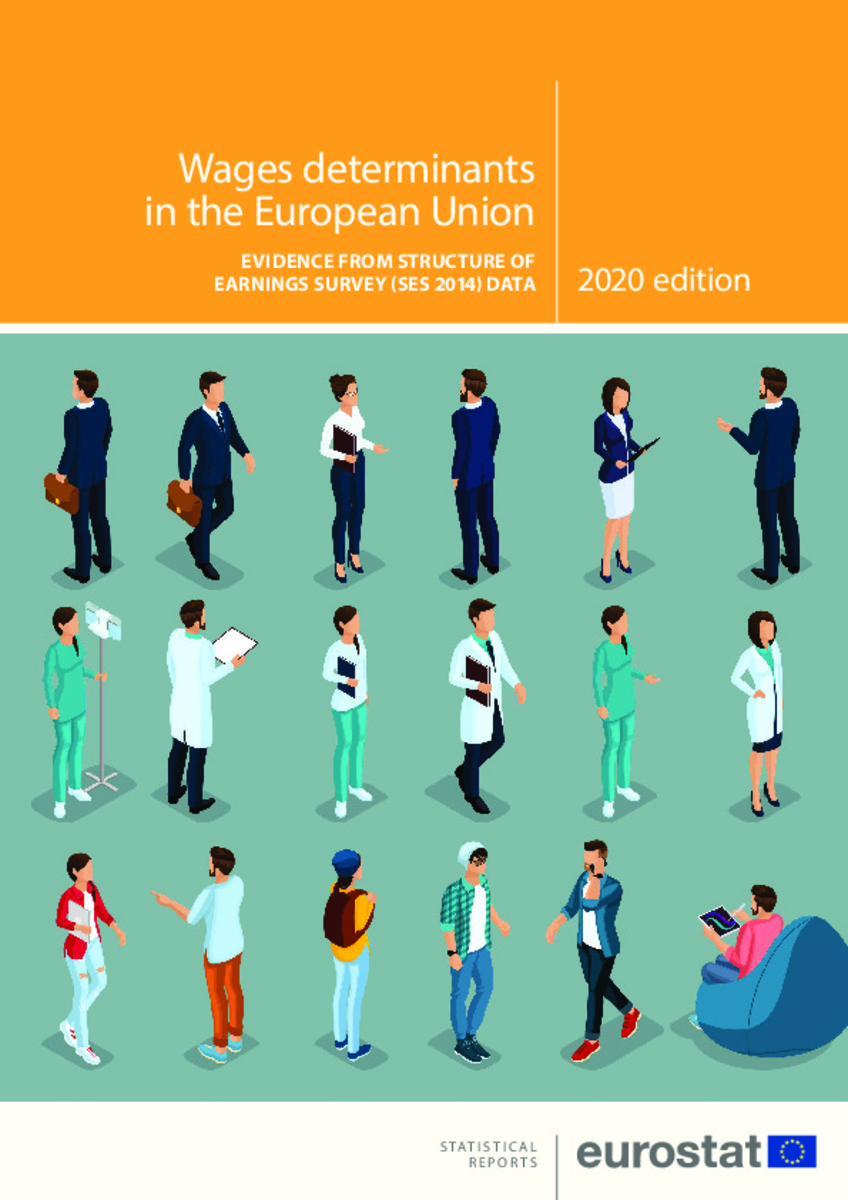Mostrar el registro sencillo del ítem
Wages determinants in the European Union Evidence from structure of earnings survey (SES 2014) data : 2020 edition
| dc.contributor.author | Comisión Europea. Eurostat | |
| dc.contributor.author | Henrion, Thibaut | |
| dc.contributor.author | Alcántara Ortega, Javier | |
| dc.contributor.author | Leythienne, Denis | |
| dc.date.accessioned | 2020-05-27T08:09:43Z | |
| dc.date.available | 2020-05-27T08:09:43Z | |
| dc.date.issued | 2020 | |
| dc.identifier.isbn | 9789276174356 | |
| dc.identifier.issn | 2529-3222 | |
| dc.identifier.other | KS-FT-20-003-EN-N | |
| dc.identifier.uri | http://hdl.handle.net/10234/188303 | |
| dc.description | El ISSN y el ISBN corresponden a la versión electrónica del documento | ca_CA |
| dc.description.abstract | Since the turn of the millennium, the European Commission (Eurostat) has published detailed and harmonized information on the nominal wages paid by the employers to their employees. This information, collected with the support of the European Statistical System, provides important insights into the labour market situation of the different Member States of the European Union. For employers, wages represent an important part of the production costs and determine to some extent their cost competitiveness. For most employees, wages make the main part of their income thereby contributing to their economic welfare. The importance of ensuring fair and transparent wages was highlighted in the European pillar of social rights (Commission, 2017) that was fully endorsed by the new Commission (van der Leyen, 2019). It is therefore important to monitor the levels and developments of wages and total labour costs at a macroeconomic level, as done by Eurostat through a complete set of annual and quarterly releases. It is equally useful to analyse how the individual job profiles and characteristics of the employer determine wage patterns in the different EU countries. This provides information on how labour markets reward the different characteristics of the job tenant and how the different types of businesses compete in terms of wages offered to their employees. By crossing job characteristics with sex, such analyses also shed light on possible gaps between the financial returns on education, part-time work etc. offered to men versus women. The study presented in this document uses the detailed information collected through the latest Structure of Earnings Survey (SES 2014) that records the gross wages received and the individual characteristics of about 240 000 enterprises and 11 million employees throughout the EU. This statistical working paper should help users to better understand the determinants of wages in the different EU countries thus contributing to the public debate and policy actions in the labour market domain. | ca_CA |
| dc.format.extent | 30 p. | ca_CA |
| dc.format.mimetype | application/pdf | ca_CA |
| dc.language.iso | eng | ca_CA |
| dc.publisher | Oficina de Publicaciones de la Unión Europea | ca_CA |
| dc.rights.uri | http://rightsstatements.org/vocab/CNE/1.0/ | * |
| dc.subject | Población y condiciones sociales | ca_CA |
| dc.title | Wages determinants in the European Union Evidence from structure of earnings survey (SES 2014) data : 2020 edition | ca_CA |
| dc.type | info:eu-repo/semantics/report | ca_CA |
| dc.identifier.doi | 10.2785/596126 | |
| dc.rights.accessRights | info:eu-repo/semantics/openAccess | ca_CA |
| dc.relation.publisherVersion | https://op.europa.eu/s/n7eD | ca_CA |
| dc.subject.eurovoc | Asalariado | ca_CA |
| dc.subject.eurovoc | Wage earner | ca_CA |
| dc.subject.eurovoc | Coste salarial | ca_CA |
| dc.subject.eurovoc | Wage cost | ca_CA |
| dc.subject.eurovoc | Estadística del empleo | ca_CA |
| dc.subject.eurovoc | Employment statistics | ca_CA |
| dc.subject.eurovoc | Fijación del salario | ca_CA |
| dc.subject.eurovoc | Wage determination | ca_CA |
| dc.subject.eurovoc | Mercado laboral | ca_CA |
| dc.subject.eurovoc | Labour market | ca_CA |
| dc.subject.eurovoc | Salario | ca_CA |
| dc.subject.eurovoc | Pay | ca_CA |
| dc.subject.eurovoc | Unión Europea | ca_CA |
| dc.subject.eurovoc | European Union | ca_CA |







